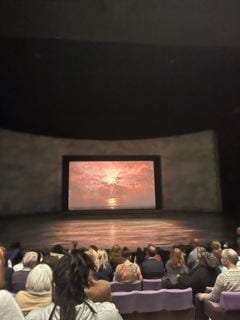Dressed for Success on the “Small Island”
Julia Zgurzynski

Last week we took a trip to see the new play “Small Island”. The story started as a novel by Helen Edmundon which Andrea Levy adapted into the play which is now on the stage at the National Theatre. The play traces the lives of a few Jamaican characters and a few English characters and the ways that their lives intersect. Gilbert and Michael are Black Jamaicans who join the British armed forces during World War II, Bernard is a white Englishman who also joins the army during World War II. Hortense is a Jamaican woman who agrees to marry Gilbert for the chance to move to England. Queenie is a white English woman who agrees to marry Bernard for the chance to move away from her native pig farm. Both women married for the chance at a different life, but in all other ways Queenie and Hortense are nothing alike. Similarly, Gilbert and Michael are both Black Jamaicans fighting a British war, but like the women, their similarities end there. Thus, we see different people living through similar situations, but with very different personalities, and sometimes different skin tones. The comparable situations allow the audience to compare and contrast the characters. The play is dense with action and characters; it even has three narrators, and so using parallel situations helps the audience to keep track of it all, without sacrificing the uniqueness of the characters.
The show was full of impressive spectacle such as the shadow box style screen which made the characters appear to be on a film screen, and the giant sheet upon which was projected an image of the ship Windrush. One visual element of the show which I especially enjoyed was the costuming. The main characters, specifically Hortense, changed costumes many times throughout the play. The costuming was essential to the show, because it helped to communicate to the audience when time has passed, and when a flashback is taking place. That kind of time signaling is especially necessary for a show which spans almost a whole decade, 1939 to 1948. I did not realize how important the costuming was to the show until after it was over, which proves that it was done in a way that felt natural. Some of the other visual effects, such as the scene where the people board the ship, were impressive, but they had a way of reminding the audience that the scene they were watching was artificial. However, the visual effect of the costumes tended to make the experience feel more natural and realistic.
One of the dynamics present in the costuming is the relaxed Jamaican style of clothing with its light colored and light weight fabrics in fun prints, as contrasted with the stiff fabrics and dark solid colors of British clothing. We see Gilbert and his cousin Elwood represent both sides. Gilbert is intensely proud to wear a British military suit, but his cousin laughs at him, saying that he should be fighting for Jamaican independence from Britain, not fighting Britains’ wars. Elwood’s casual loose clothing gives him an air of natural confidence, which stands in contrast to Gilbert, who gets his confidence from the fact that he is part of something larger than himself, the army. The actual lines of the play give a sense of the different mindsets these two characters have, but costuming helps to communicate the difference instantly.
There are many other times when intentional costuming is visible. For one, Hortense and Gilbert wear the same shade of teal once they are married, which signals to the audience that they are trying to appear well suited to each other as they begin their marriage, even if they do not quite feel that way. For Queenie, her switch from her slim magenta and yellow outfit, to her baggy floral dress immediately signals to the audience that she is now doing hard work and living unglamourously. Like in Gilbert’s moment with his uniform, there are other moments when characters reference their clothing. Hortense is very pleased to wear Mrs. Ryder’s beautiful dresses, and Queenie says to her baby “don’t you look smart”. Moments like those indicate that one theme of the play is that a person’s appearance is often overvalued in this world, one element of which is skin color. Costuming gives a theater company the chance to communicate themes of the play, and it also helps make the play feel more realistic and immersive, and “Small Island” did very well with their costuming.





